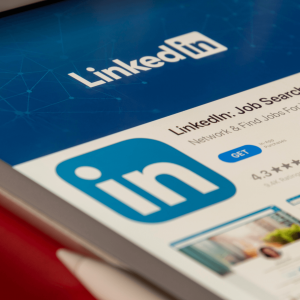Effective SaaS marketing strategy hums like a well-oiled machine, driving exponential growth for your business. This SaaS business strategy guide outlines how to choose the right marketing tactics – from paid media to content and SEO. With this guide, you’ll have the tools to build a competitive, customer-journey-tailored strategy for your SaaS company.
How confident are other SaaS marketers in their strategy? Download the SaaS Marketer Confidence Report and find out what other B2B SaaS leaders are focusing on this year.
SaaS Strategy: Maximize Growth Through Marketing
The SaaS industry is always growing and evolving, keeping SaaS marketers on their toes. Adapting to the fast-paced world of SaaS in digital marketing doesn’t have to feel hectic or overwhelming, especially if you’re tuned into the scoop on SaaS marketing insights.
“It’s a matter of being present when and where people decide they need you, using the channels and platforms they’re active on,” – Ben Sailer, the Inbound Marketing Direction at CoSchedule.
In this guide, we cover everything you need to know about how to market a SaaS product for B2B and B2C services to meet clients where they are at every stage of their customer journeys.
Augurian’s SaaS marketing experts can help you navigate how to grow your software-as-a-service business from the ground up. If you already have a successful SaaS product, we can help you amplify your growth with new and more efficient strategies.
SaaS Customer Journey: Understanding The Buyer Cycle
“Anybody can go do query research or something or competitive analysis. But mapping that to how users are actually going to go through discovery, learn about a solution, decide that you’re the right solution, and then convert to a demo or contact. That’s the magic.” — Ken Marshall, Managing Partner at RevenueZen.
The SaaS customer journey is more complex than many may first consider. Whether a traditional product or software-as-a-service, customers rarely make decisions to purchase without a process of research and competitive shopping around. This journey can be broken down into six key stages of the marketing funnel.
Online customers often spend more time in the pre-purchase stages than in-person shoppers. So a customer could be in these exploration and consideration stages for weeks or even months. But, the journey doesn’t end with the purchase. SaaS companies rely heavily on long-term customers, so retention is just as important if not more important than the initial purchase.
“Each stage of that customer journey has an entire different set of topics that you really have to speak to.”
-Josh Becerra, Augurian President
Understanding your customer’s journey is vital for any SaaS product marketing strategy. It tailors your SaaS marketing strategy for software products to a specific persona, making every advertisement or piece of marketing content more effective at nurturing leads. The buyer cycle shows a company where to meet prospects and how to lead that conversation.
The B2B SaaS Funnel in Six Stages
For B2B SaaS products, the customer journey is often even longer than it is for B2C. You are developing a relationship with potential buyers for months, or even over a year before they make a purchase. This makes it all the more important to fully understand the specifics of your B2B SaaS marketing funnel. This should include users’ pain points, fears, hopes, motivations, and barriers.
- Unaware: Potential buyers don’t know about your product and the problem that it solves. In fact, they don’t even know that they have a problem yet. Tactics at this stage include paid social media content and display ads to reach large audiences who aren’t searching yet.
- Problem Aware: Buyers still don’t know you yet, but they are beginning to explore a specific topic related to a problem or barrier they are facing. This is where you can introduce yourself as a trusted resource with a SaaS content marketing strategy (SEO blogs and videos.)
- Solution Aware: Buyers at this level start to look for software solutions to their problems, and want to know as much as possible about their options. They may spend months doing research, so make sure your landing pages are easy to find and navigate. Paid search engine ads are also incredibly effective at this stage.
- Solution Compare: Customers compare products they have researched before making their final decision, looking for the most trusted, reputable brand and product that matches their needs. Show them that your product is the best choice with off-site reviews and comparative blog posts. Or, try highlighting success stories and positive reviews on your company’s blog or social media.
- Purchase: It’s finally time to make the purchase and implement customer success strategies for SaaS. Optimize your web pages to make purchases as convenient and secure as possible with an ultra-smooth check-out process. This will set you up for successful long-term relationships with satisfied customers.
- Loyalty: This is where your customer success team comes into play. Make using your SaaS product smooth and easy from day one, with an abundance of onboarding resources and proactive support. Survey returning customers regularly and address concerns quickly to keep your clients happy. Happy customers will promote your product for free! Offer referral codes and rewards to existing customers to encourage this kind of promotion.
SaaS Competitive Analysis: Scoping Out the Competition
Scoping out the competition is a great way to understand the current market and gain more confidence around your product pricing. This can also give you a competitive advantage.
For example, one of the most common marketing strategies for technology companies is to provide a demo or free trial of products to draw in new customers. See what freebies the competition is offering. Then, compare that to what you can offer based on your budget.
Keyword optimization is another major element of SaaS marketing strategy and competitive analysis. If you still aren’t sure which keywords to use, try reverse-engineering what is already working by researching the competition’s keywords. Evaluate the keywords’ relevance to your products and their difficulty levels, and then align those topics with your customer journey for a winning plan.
How to Market Your SaaS Business
When it comes to launching and measuring digital marketing plans for SaaS, you must consider that this industry is most often completely online and uses a monthly or yearly subscription model. This means that your SaaS marketing strategy is going to be different from any other marketing strategy.
SaaS marketers use a nimble combination of unique content, SEO, and PPC tactics.
The best SaaS growth strategy involves consistent collection and analysis of quality data. This allows you to monitor your progress toward your KPIs, or Key Performance Indicators, and make shifts in your strategy as needed. Collecting data and measuring them against your KPIs will ensure that you continually use the best marketing tactics in the most cost-efficient ways.
“Momentum typically comes in things that are quantifiable and measurable. You have to have quantifiable and measurable objectives. It’s also really important to remember that not all marketing metrics matter to your executive teams and to your boards. The trick is understanding which of those [metrics] actually matter to your sales, executive, and board peers.” — Billy Cripe, the VP of Marketing at CIBO
Here are the top 5 metrics for measuring and evaluating SaaS growth from our guide:
- Monthly and Annual Recurring Revenue (MRR and ARR)
- Churn Rate
- Customer Acquisition Cost (CAC)
- Customer Lifetime Value (CLV)
- Net Promoter Score (NPS)
3 SaaS Marketing Tactics That are Proven To Drive Growth
A comprehensive marketing plan for a SaaS company combines all three of these strategies in unique ways to meet their KPIs. To find this magic recipe, you need to know the details of each strategy including when to use SEO vs SEM.
- Content: A versatile and essential strategy for SaaS companies of all sizes
- SEO: Ideal for long-term, exponential growth
- PPC: Ideal for short-term, fast results
These marketing tactics use specific metrics that allow you to consistently alter your plan to maximize growth. Not sure which metrics to pair with your marketing tactics? Save our guide to SaaS marketing metrics for clarity on what you should be tracking and measuring.
Organic Search (SEO)
SEO, or search-engine optimization, is often considered the bread and butter of SaaS digital marketing. SEO optimizes and grows your website so that you can rank higher in Google and drive revenue from users at every stage of the customer journey. The vast majority of prospects search for their software needs on organic search engines, so that’s where SaaS products need to be.
- On-Page SEO: Encompasses any tactics you can use on your website and content to improve search engine rankings.
- Off-Page SEO: SEO actions and activities you use outside of your website.
- Technical SEO: Oher tactics to improve organic search engine ranking position and speed.
If there is a product-market fit, the fastest way to find customers is often a google search. Search is beautiful in that a search query is a pure example of a user’s intent. If a user is searching for a solution to a specific problem, you can be sure they –or someone they know– needs that problem solved. In that sense, search is the best tactic to harvest the current demand for your product (or the demand of your competitor’s product) if you target the right terms.
SaaS SEO drives exponential growth, but as Ben Sailer of CoSchedule explains, it’s not a simple tactic. “After years of commitment to SEO, we’re now in a position where we can compete for extremely high difficulty keywords in our industry. It hasn’t been easy but I can confirm it pays off in the long run.” Supporting the customer journey with SEO pays off. CoSchedule gets over 1 million page views per month and has generated more than 800,000 email subscribers by prioritizing organic search.
It takes time and dedication to become a trusted authority and achieve rankings for the most competitive (and often lucrative) topics related to your business. Visit our SaaS SEO strategy guide for more tips on building a long-term strategy for your site.
 On-Page SEO
On-Page SEO
On-page SEO is a cornerstone of SaaS growth strategy. It includes optimizing content by using your keyword in the title, the meta-description, and the first 100 words on your written content. We’ve found that rewriting meta tags is another highly effective on-page tactic for increasing revenue.
Some key metrics for measuring on-page SEO are:
- Click-Through Rate: See which pages and content are getting the most organic traffic.
- Bounce Rate: The percentage of organic visitors who leave your site without clicking on another page. This gives you insight into the quality of your landing pages.
- Organic Conversion Rate: Measures sales growth specifically from SEO strategies.
Off-Page SEO
Earning backlinks, or links pointing to your site from other reputable sites is core to off-page SEO strategy. Backlinks build credibility and drive traffic to your site, but they have to be from sites that are both relevant and trusted by search engines. Search engines also interpret backlinks in this way, so more backlinks often mean a higher search engine ranking across your site.
Link building is not the only part of off-page SEO. Even something as small as commenting on another blog can be an effective tactic for building off-site prevalence.
Track your backlinks with marketing tools to see where they are being shared and monitor them for outdated or new links. New links could mean potential new partnerships. Links that are newer and more relevant also have the most positive impact on your off-page SEO.
 Technical SEO
Technical SEO
Technical SEO goes beyond the actual content. It includes tactics that don’t fit into the other two categories like mobile-device compatibility and webpage loading speed. Different technical SEO tactics require different degrees of technical skill.
For example, you may be able to increase loading speed fast by simply making image files smaller. But if you need to restructure your sitemap or fix 404 errors, it may be a larger project. This is where an experienced SEO agency can work their magic to transform your site’s performance without building any new content.
Key metrics for SaaS technical SEO:
- Core Web Vitals Report from Google
- Number of indexed pages
- Webpage loading speeds
- Crawl errors
Content Marketing
SaaS content marketing can bring quality leads to your site and build your company’s credibility. With so many SaaS products for customers to choose from, being known and trusted by prospects when they are ready to make a decision will make or break your chances of getting that lead. Brand awareness and authority can help your company stand out. How do you build this up over time? By creating content, of course!
Content strategy for SaaS should be a go-to when building your marketing plan. It’s often more cost-effective than traditional marketing and the impact of optimized content can be measured across channels. SEO content creation is especially important for enterprise SaaS marketing strategy since companies are often looking to do business with other companies that they know, like, and trust.
A good SaaS content strategy uses content marketing KPIs to measure growth toward your overall business goals. However, make sure to avoid collecting a bunch of data with no purpose. We recommend focusing on the following metrics when analyzing your content marketing:
- Direct and Indirect Conversions: These metrics measure the number of conversions from each channel. They allow marketers to see which content is driving the most conversions.
- Scroll Depth: The more of a page a user engages with the better, so this is another great KPI for evaluating which content is most effective and which needs work.
- New vs. Returning Users: Understanding user behavior provides insight into how to create more returning users. The more often someone returns to read content, the further they move down the SaaS sales funnel towards the ultimate goal of loyalty.
Our content marketing team at Augurian can develop a sophisticated content plan that aligns with your sales funnel. Get in touch with our experts today to learn more about how we can help you.
 SEO Blogs
SEO Blogs
SEO blogs integrate search engine optimization into content marketing. Optimizing your content to rank at the top of organic searches lets you reach a larger audience including customers who were previously unaware of your product.
Your SEO blog posts can target users at different stages of the B2B SaaS funnel:
- Ideas and Inspiration Guides: Top of the funnel content that drives awareness and traffic.
- Explainers and How-Tos: Upper-middle funnel content that drives traffic and builds trust.
- Buying Guides and Comparison Blogs: Mid-funnel articles that build trust to drive action.
Email Marketing
SaaS email marketing strategy can be used at different stages of the customer journey as well. You can provide free trial opportunities to draw in new customers or send emails and surveys to existing customers to get a gauge of their satisfaction with your product. Sending announcements and new content via email can keep B2B SaaS buyers engaged through lengthy customer journeys.
Paid Media (PPC)
Paid media is essential in the early stages of a customer’s journey. Effective SaaS PPC (pay-per-click) ads can move a buyer from the unaware stage to awareness of your product and the problem it addresses. Empathetic understanding of the hopes and pain points of your customer’s journey will empower you to craft powerful ad copy that fosters loyalty, trust, and action.
Paid media can be broken down into three sub-categories:
- Paid Search: PPC ads that show up at the top of search engine result pages. This ensures your website is seen.
- Paid Social: Paid ads and sponsored posts on any social media platform. This allows you to target specific audiences.
- Display: All other types of paid online advertisements including pop-ups, banner ads, and video ads.
Paid ads can appear in search engines like Google and social media sites like Facebook and Twitter. Digital advertising for SaaS on Facebook and other social networks boosts growth by reaching new, highly-targeted potential customers who meet certain persona-based criteria.
Augurian tracks and measures key metrics to track the results of your PPC services. So, you won’t needlessly waste money on ads that aren’t resonating or driving conversions. Reach out to let us help you take your SaaS marketing strategy to the next level with our expert paid media team.
Paid Search
It would be difficult to find someone who has never used Google or Bing to search for something online. For this reason, paid search has the potential to reach a large audience including potential buyers who are still in the unaware stage. In fact, one client saw an over 80% decrease in their cost per lead by restructuring their Google ads and adding some paid social to their strategy.
Key paid search marketing metrics:
- Cost Per Click (CPC)
- Average position on search engine results page
- Click-Through Rate (CTR)
- Lead Volume
- Cost Per Lead (CPL)
- Return on Investment (ROI)
 Google Ads for SaaS
Google Ads for SaaS
Google Search is perhaps the most important tactic for many SaaS companies. Google uses a complex, data-driven system for setting up paid advertisements in their search engine results pages. Google Ads also allows you to show up as display ads on YouTube or Gmail.
Other tactics on Google like display, and YouTube are great for creating demand. If a customer doesn’t know about your product they can’t search for it. Display channels like social can be a great way to “push” people towards your product and grow demand.
Remarketing is another important tactic that you can employ with Google Ads. Since most people don’t make decisions immediately, retargeting allows you to serve display or search ads to people who have visited your website. Retargeting ads are an essential way to continue to remind your prospect of your product. It also helps prospects overcome common barriers to purchase by challenging any negative assumptions they may have about your product.
Bookmark our guide to Google Ads Bidding Strategies for useful tips and advice on the Google ads system including which metrics you should be focusing on and ways to grow them.
Bing Ads for SaaS
Microsoft Ads strategies and use are much the same as Google Ads but without YouTube. The big differences are that Microsoft Bing Ads have access to LinkedIn data for their users, which is huge for targeting B2B SaaS prospects based on a specific job function or industry.
Microsoft Bing and Yahoo ads may reach a smaller audience than Google ads, but they are also cheaper and have less competition. So, while volume is typically only 10-20% of what you can expect from Google Ads, it’s also typically cheaper since other advertisers haven’t always made the effort to create a Microsoft Ads account. For smaller and newer companies, this can be a smart way to kickstart your growth.
Paid Social
Using paid social media marketing allows you to narrow the target audience of your digital advertising for SaaS. Sponsored social media posts are ideal for customers at the very beginning and latest stages of the SaaS marketing funnel. Paid ads can also be powerful for targeting users in the solution comparison stage, as they could be swayed towards their final decision when noticing someone they like and follow promoting the brand – up to 95% of purchasing decisions are emotional after all.
Key metrics for tracking and measuring paid social marketing include:
- Cost Per Click (CPC)
- Potential Reach
- Average Engagement Rate (through likes, share, and comments)
- Click-Through Rate (CTR)
- Social Media Conversion Rate
 Facebook Ads for SaaS
Facebook Ads for SaaS
Facebook ads for SaaS can be a powerful tactic when leveraged well because users there are looking to be distracted. This presents the perfect opportunity to introduce yourself.
Facebook ads offer built-in data tracking features of Facebook ads and how your company can make the most of it. Facebook is typically cheaper than other platforms from a cost-per-view perspective.
Facebook ads also have the ability to target based on 1st party data. So, if you have good lists of prospects that contain data like email addresses, you can often target the individuals on those lists and turn them into loyal paying customers.
LinkedIn Ads for SaaS
LinkedIn ads are a noteworthy choice for B2B SaaS marketers in particular. While LinkedIn is considered expensive compared to most other channels, its ability to target based on job title, skills, and industry is powerful. It’s easy to get started and optimize LinkedIn ads to improve your conversion rates.
At Augurian, we like its ability to focus on a specific audience for each distinct ad since no two customers are exactly alike. While LinkedIn may not drive a lot of sales, it’s a popular way to get the right people to your website earlier. From there you can target through other channels like search, social, or display to nurture users toward conversion and advocacy.
Display/Programmatic
Display ads work when customers are in the very top and very bottom stages of the SaaS funnel. They can build brand awareness and authority. You can purchase display ads through a network such as the Google Display Network (GDN).
Key display advertising metrics include:
- Impressions, the number of times your ad is displayed
- Actual Reach, the number of people who see your ad
- Number of clicks
- Click-Through Rate
- Relevant conversions
Alternatively, you can purchase programmatic ad space. Programmatic ads leverage 3rd party data to create a lot of different types of audiences that work well in niche applications and potentially have a further reach.
Track and Measure Your Strategic Goals With Analytics
No matter where your customers are in their journey or which specific tactics you’re using, you should be collecting data. Even the best content is data-informed. Tracking data helps to ensure that your marketing budget is allocated well and that your business is gaining traction.
“[Analytics is] the way to understand how people come to your site, what the terminology they’re using to find you (and, ultimately, do business with you) so you can map that to your strategy.” Ken Marshall, Managing Partner at RevenueZen.
Analytics enables you to track sales outcomes, or CRM outcomes, in Google Analytics or Google Ads. With an understanding of customer lifetime value –and the ability to break down the expected probability of an event leading to a closed deal– you can put values to specific actions to guide your decisions in a way that is meaningful to your business, without the digital jargon.
But with dozens of metrics to choose from and keep records of, how can you manage it all? That’s where B2B SaaS analytics tools come in. Some analytics tools are free while others operate on a monthly subscription model. At Augurian, our marketing analytics experts can manage your KPIs for you to ensure you are getting the most out of whichever data manager you choose.
How Confident Are SaaS Marketers in their Strategies?
We surveyed SaaS marketers on their confidence levels going into 2021. We wanted to know what SaaS marketing tactics they thought were working well and which ones needed revamping.
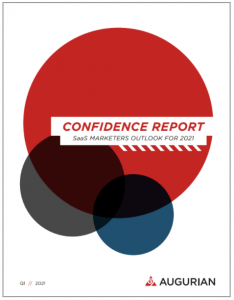
Download the SaaS Marketer Confidence Report
Find out what’s working for SaaS marketers today and make the right choice for your business. Then, get in touch with our digital marketing experts to kick start your SaaS marketing strategy or find out what gives our partners confidence in their digital marketing investments.
Grow Your Digital Marketing Strategy With Augurian
Now that you understand how to grow a SaaS business with digital marketing, you know that it’s not easy. Choosing the right SaaS marketing strategy involves plenty of decisions about which tactics to use, how to use them, and with which SaaS metrics to measure their effectiveness.
Augurian is a digital marketing agency with years of experience partnering with innovative SaaS marketing leaders. Get in touch today to find out how we can help you build a SaaS marketing strategy you’re 100% confident in.
Start Building Your SaaS Digital Marketing Strategy Today
SaaS marketing strategy is a delicate balance of art and science that we explore in our digital marketing blog. Subscribe to our blog for SaaS marketing news, tactics, and fresh ideas that drive B2B growth. Or, sign up for our SaaS Scoop to stay in the loop on the latest on how to market SaaS software.
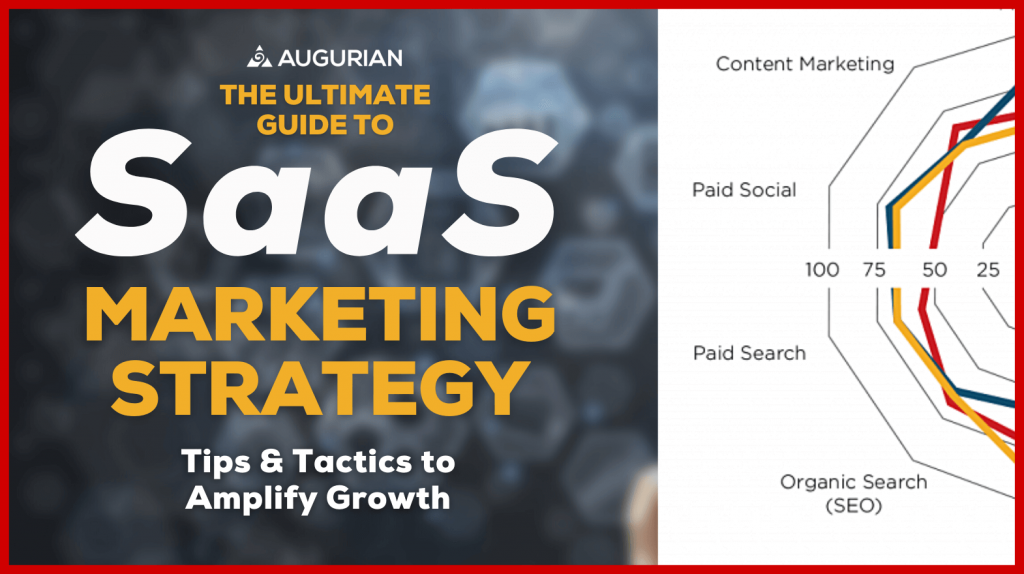




 On-Page SEO
On-Page SEO 
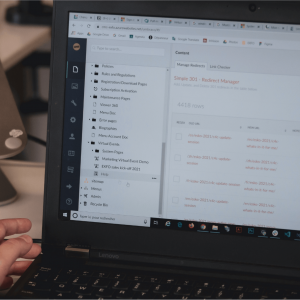 Technical SEO
Technical SEO
 SEO Blogs
SEO Blogs
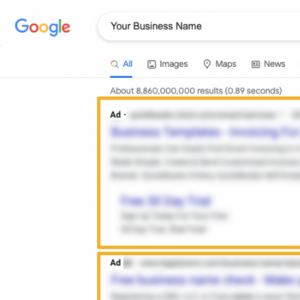 Google Ads for SaaS
Google Ads for SaaS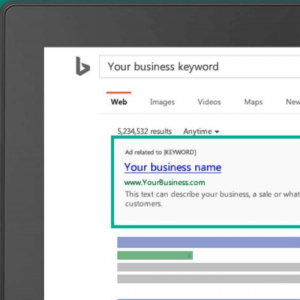
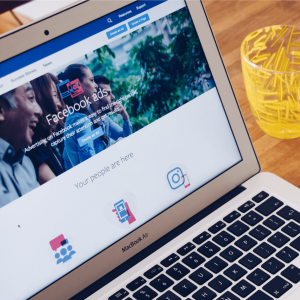 Facebook Ads for SaaS
Facebook Ads for SaaS